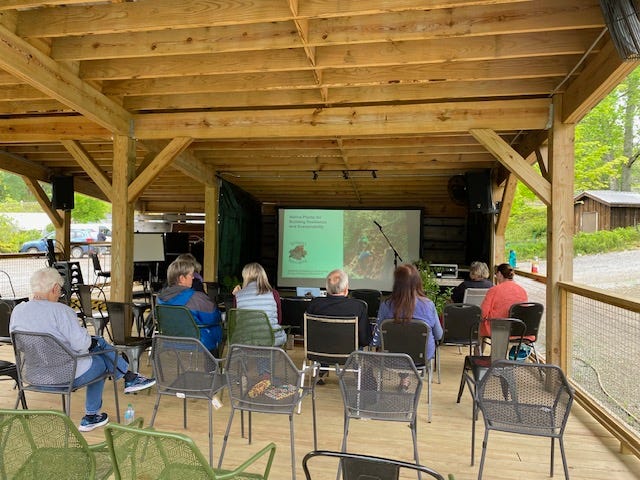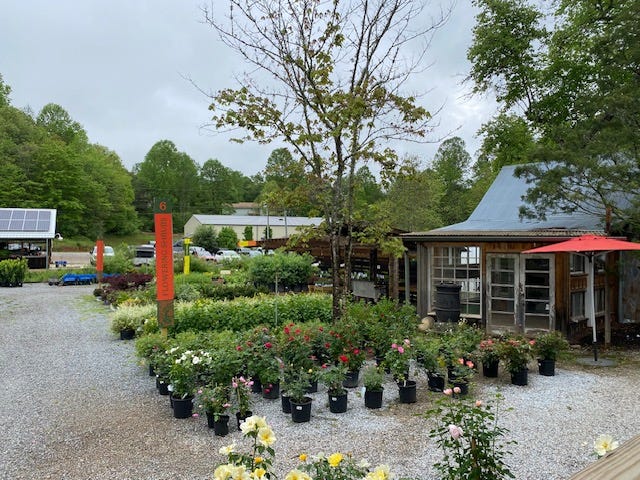3 tips for planting sloped landscapes
Landscapes with inclines post unique challenges for planting and maintenance.
Last weekend I took a gardening class at Winding Stair Farm in Franklin, North Carolina. Spriggly’s Beescaping, a nature education and habitat restoration landscaping business based in Western North Carolina (WNC), led the session.
Nearly every property owner in WNC has some sort of slope or incline on their land. Inclines pose erosion and runoff issues, which can lead to landslides, sediment buildup, tree falls, and habitat loss. Spriggly Beescaping’s class “Tackling Steep Bank Drainage” addressed each of these scenarios. One thing I noticed is that the solutions are all permaculture practices. Hearing management practices and strategies rooted in permaculture without the word coming up underscores the permanence of these principles. They’re inherently part of ecological systems.

Here are just a few gold nuggets I found
I’ll make this the first item since the #1 way to manage sloped landscapes is cultivating biodiversity. Varying root structures help to stabilize soil, allow for optimal hydrology rather than runoff, and create abundant food sources and habitats for wildlife.
Make non-native plants work for you. I think I’m not alone when it comes to the reflex of completely pulling out non-native plant species. At first, it feels like you want to make the most of your effort removing them and not leave an opportunity for the plants to re-grow from their roots. The guidance shared in the class promotes cutting down to the base and instead leaving roots in place for soil stability. The intent is to establish enough native species to crowd out the non-native before they have a chance to re-grow. Also, according to the US Forest Service, many non-native plants have such complex root systems that you likely wouldn’t pull the entire plant out anyway. Based on the class guidance, keeping the roots intact has greater benefit for keeping the soil in a state where transplanting native species will have greater success.
Although this nugget wasn’t presented in the class, I had an epiphany. When the presentation centered on the plants based on their varying sun needs, I realized many of the plants presented—green & gold, dwarf iris, blue-eyed grass, ferns, violets—are all present on my property already. They’re established in high volumes in other areas of the property, so instead of buying new plants and transporting them in, I’m going to re-site existing plants already adapted to the property. As I work on this experiment, I’ll share the steps and progress. When? I’m overwhelmed with bees right now, so timing remains to be seen.
If you’re not able to attend one of Spriggly’s classes in person, they have a voluminous collection of nature education virtual guides, videos, and and presentations.




